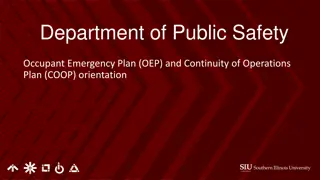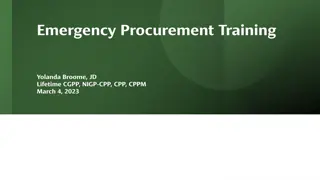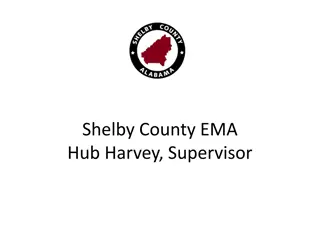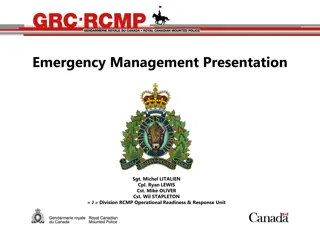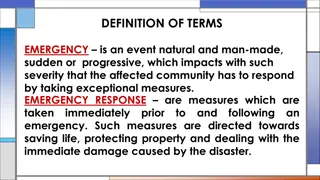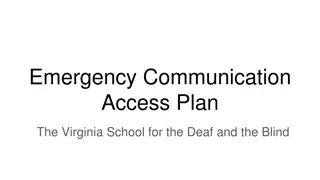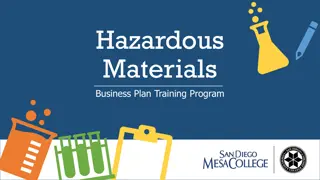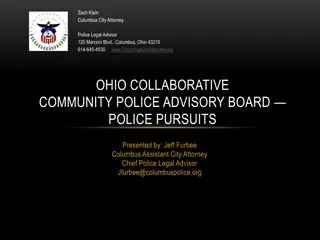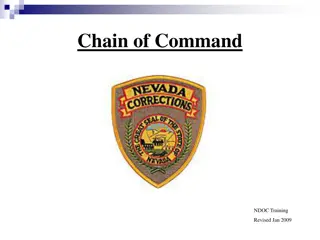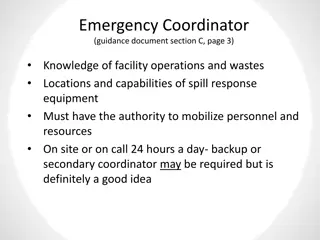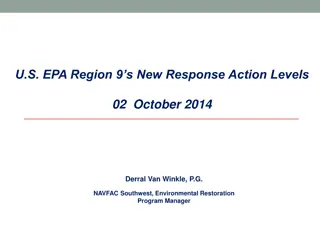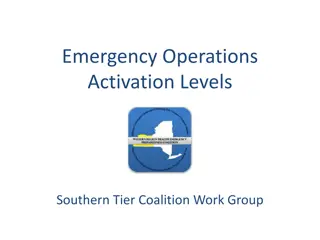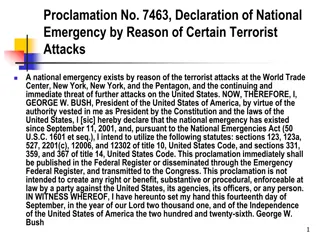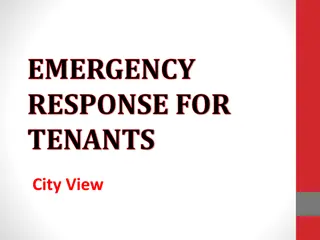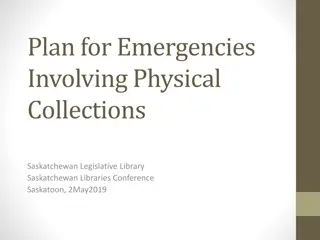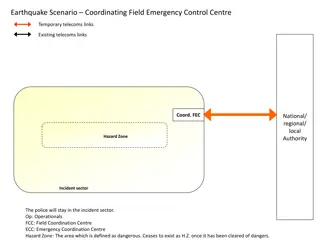Emergency Response Procedures and Levels in NDOC Facilities
A comprehensive overview of emergency response procedures in NDOC facilities, including the different levels of emergencies and the resources allocated for each level. The policy outlines specific actions and personnel roles for responding to small and moderately sized incidents, ensuring a structured and effective approach to managing crises within the institution.
Uploaded on Sep 22, 2024 | 1 Views
Download Presentation

Please find below an Image/Link to download the presentation.
The content on the website is provided AS IS for your information and personal use only. It may not be sold, licensed, or shared on other websites without obtaining consent from the author.If you encounter any issues during the download, it is possible that the publisher has removed the file from their server.
You are allowed to download the files provided on this website for personal or commercial use, subject to the condition that they are used lawfully. All files are the property of their respective owners.
The content on the website is provided AS IS for your information and personal use only. It may not be sold, licensed, or shared on other websites without obtaining consent from the author.
E N D
Presentation Transcript
(1) A situation requiring immediate action to protect life or prevent escape; (2) A situation when maintaining control of inmates or operations within the institution appears to be outside the capability of the institutions resources;
(3) Lives are in immediate danger or the large scale destruction of state property (4) Major disturbances including riots, mass escape and disasters
Violence in the Workplace Blackout/Power Failure Earthquake/Flood Acts of Terrorism Riot Bomb Threat Hazardous Materials Accident Hostage Fire/Explosion Medical Emergencies Critical Incidents
NDOC policy spells out the requirements for all NDOC facilities. Each facility has their own site specific emergency plan. You can get with your supervisor to review your facilities Emergency Procedures if you have questions. There are three different levels of emergencies, Level 1 Level 2 Level 3
Level I: In the case of small incidents where a minimal commitment of resources is required to immediately resolve the emergency, a level one response will be announced. An example of such an emergency might be an Inmate on Inmate fight (cellmates). The following available resources will immediately respond to the designated location:
Shift Supervisor (Incident Commander) C.E.R.T. Sergeant C.E.R.T. Officers (If C.E.R.T. is available at your location) S&E Officers Medical Staff (For possible injuries) Maintenance
Level II: In the case of a moderately sized incident where a moderate commitment of resources is immediately required to adequately resolve the emergency, a level two response will be announced. An example of such an emergency might be multiple Inmates fighting on a tier. When announced the following available resources will immediately respond to the designated location:
Shift Supervisor C.E.R.T. Sergeant C.E.R.T. Officers (If C.E.R.T. is available at your location) S&E Officers Medical (For possible injuries) Maintenance Available custody officers (pull positions)
Level III: In the case of a large scale incidents where a total commitment of resources is immediately required to adequately resolve the incident, a level three response will be announced. An example of such an emergency might be a confirmed escape or a riot on the yard with destruction of state property. When announced the following resources will immediately respond or will be recalled to immediately respond to designated locations.
Shift Supervisor C.E.R.T. Sergeant C.E.R.T. Officers (If C.E.R.T. is available at your location) S&E Officers Medical (For possible injuries) Maintenance Available custody officers (pull positions)
This is to ensure that all staff are trained in emergency responses to ensure staff and inmate safety at all Nevada Department of Corrections locations. The Director is responsible for establishing regulations for the safety of staff and inmates. The Deputy Director is responsible to ensure the implementation of AR 404 to all facilities and institutions.
Wardens are responsible to develop and maintain a response plan detailing specific responses to emergency situations. All Department employees are responsible to respond in accordance to the specific response defined by the Emergency Response Manual and operational plans for each Institution.
If needed the Warden or Associate Warden will contact the P.I O. (Public Information Officer) with information about the emergency. The type of response(s) will depend on the type of alarm given and the position staff hold at the time of alarm.
The Warden or his designee has overall command of the institution at all times. In the event of an emergency no employee or volunteer of the NDOC may leave the institution until a code 4 or an all clear is given. Any traffic other than NDOC staff will not be granted access to the institution during an emergency.
During an emergency employees are subject to the performance of their duties which could be outside their normal job classification and normal duty periods. For more specific information regarding emergencies and the response to them refer to the Confidential Emergency Response Manual maintained at each institution.
It is your responsibility to notify your supervisor if your physical/mailing address, home/cell phone number change so the recall roster can be updated with your most current info. The above info as well as your position number are maintained in a secure manner on the recall roster.
The shift supervisors maintains all necessary recall lists for their shifts. The assigned Associate Warden/designee will ensure that all recall lists are accurately maintained and given to all appropriate locations inside the Institution.
It is your responsibility to locate the Emergency Response Manual for your institution and know what to do.





